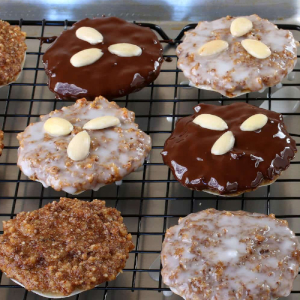We’ve looked at the more-famous German main dishes and the sides that usually accompany them. Today, we’ll cap off our Culinary Expedition to Germany with a survey of the country’s most popular Breads and Desserts…
 Stollen: A Christmas tradition! A bread, not a cake, it features raisins and candied citrus peel…
Stollen: A Christmas tradition! A bread, not a cake, it features raisins and candied citrus peel…
Breads
Germany is famous for its signature breads. In fact, it’s claimed more than 300 varieties of Bread are made in Germany, not counting regional variants. It’s also said that, in most smaller German towns, there’s a bakery on every street. Alas, you can only get the more exotic German Breads in North America at Delis, and ‘German bakeries’ which are few and far between. Today, we’ll look at some prime examples of the German art of Bread making, representing the main categories…
Brötchen: Literally ‘Little Breads’, this is the catch-all name for German Crusty Rolls. They’re everywhere.

Everybody eats them at breakfast. They come in all varieties, from Dark Rye to multigrain.
Vollkornbröt: This is the everyday multigrain, wholegrain bread of Germany. It may contain whole kernels of only two or three types of grain, or 5 or more (Fünfkornbrot). Depends where you buy it. It’s based on Rye flour. It’s a medium-weight loaf often enjoyed in thin slices with Cheese or Coldcuts.
Landbröt: The ubiquitous lighter-weight, Wheat-based loaf. It usually contains just enough Rye flour to give it a pleasant tan colour and some extra flavour.
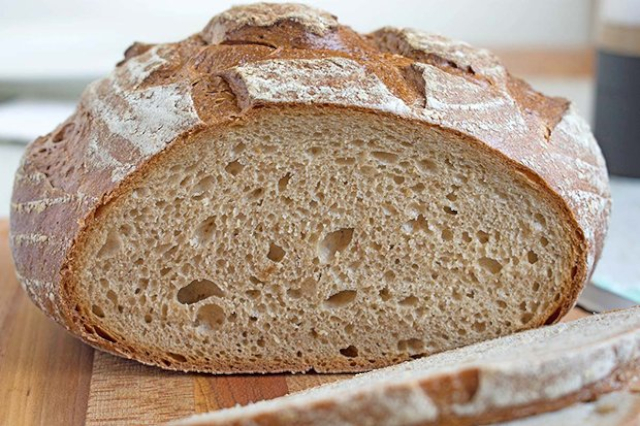
It’s baked in hand-formed loaves, rather than in what we call loaf pans. And that’s the peasant roots of many German Breads cropping out
Katenbröt: This is a whole-grain medium-weight, Dark Rye Bread. Again, it’s not usually baked in a bread pan but in a hand-formed round-top loaf fired directly on the oven floor.
Pumpernickel: This is the heaviest and darkest of the German Breads, and for good reason. It’s 100 percent Rye, which is present not only in flour form but as whole kernels.
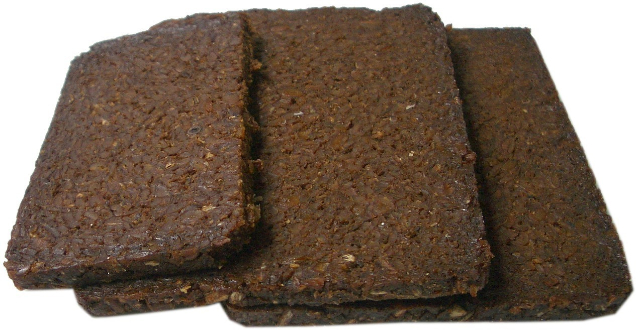
It’s almost unleavened, is generally square in cross-section, and usually comes in small packets, pre-sliced. There’s a fine art to slicing Pumpernickel…
Rogenbrot: Sourdough Rye Bread; a German specialty. Actually, there are many different Sourdough breads in the German recipe book.
While you probably won’t find a wide variety of German Breads at your local European Deli, you can make them at home with a little practice and little elbow grease. (The doughs trend to be quite heavy.) Finding the less-commn ingredients may be the hardest part..
Desserts
Obstorte: The secret to this Fruit Flan is the shell. It’s made from just 4 ingredients: flour, sugar, Baking Powder and eggs. The eggs and Baking Powder together produce a light, airy, cake-like shell.
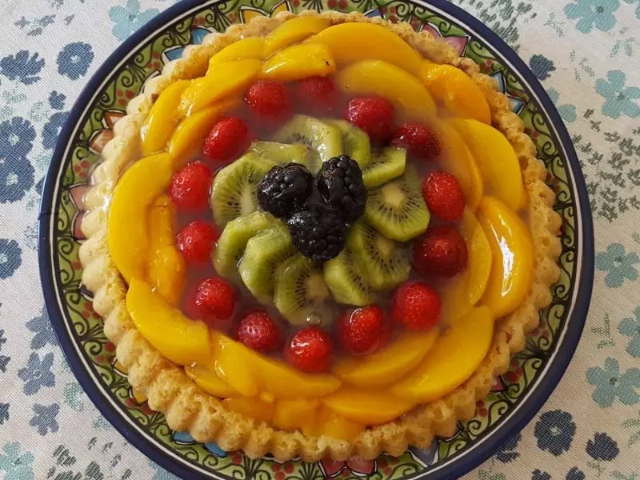
The filling can be any fruit you like, but Strawberries and Blueberries are traditional. The fruit pieces are usually arranged artfully atop a layer of simple vanilla custard. Go ahead and use store-bought mix. Nobody will notce, and those who do won’t care.
Kokosmakronen: If you love Coconut, you’ll move these traditional Coconut Macroons. They use just 4 ingredients: flour, coconut flakes, sugar and eggs. Be sure to use parchment paper to line your baking sheet, or these sticky little gems may not want to release! They’re often dipped in Melted Chocolate for a more-special finish.
Lebkuchen: Traditional Christmas Cookies. The secret is in the sauce (as they say). In this case, it’s the glazes and toppings you put on the lovely little morsels!
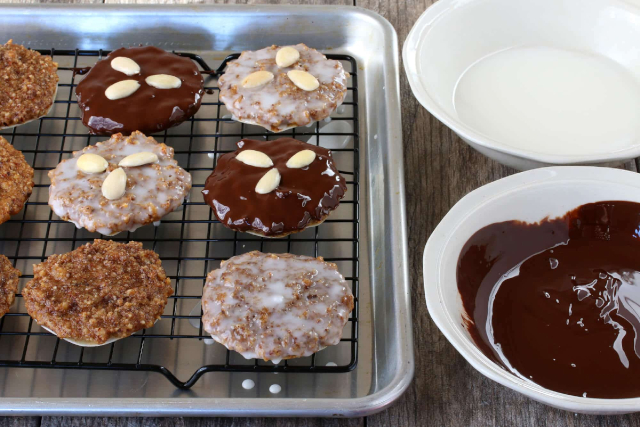
The cookies themselves are made from flour, eggs, brown sugar, baking powder, ground Hazel Nuts and Almonds, and loads of candied citrus peels. Common toppings may include Chocolate or Sugar-Milk glaze. Slivered almonds are a traditional garnish.
Rumkugeln: Famous German Rumballs! This no-bake treat is beloved by all who try it – except, maybe, the tee-totallers. They’re simple: Just mix together Melted Chocolate, Powdered Sugar, Butter, Rum and Ground Hazelnuts (optional). Form into table tennis ball-sized spheres and roll them in Chocolate Sprinkles, Cocoa Powder, Powdered Sugar, Chopped Hazelnuts or finely-grated Coconut. Maske lots! Nobody can stop at just one…
Sacher-Torte: Perhaps the world’s most famous fancy Chocolate Cake. It’s not hard to make, if you just take your time and observe recommended temperatures at various stages of production.
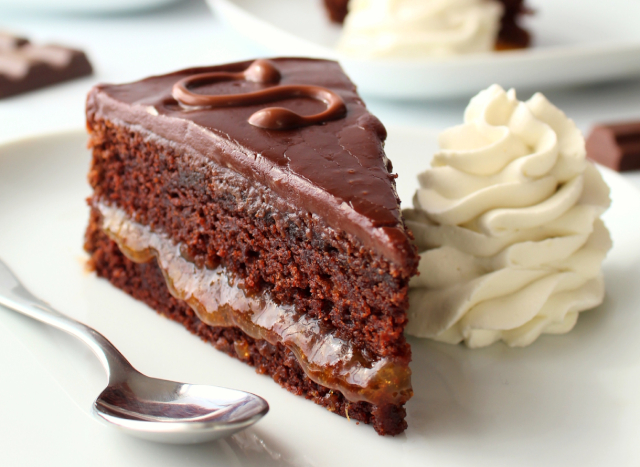
All the Cakes takes is Dark Chocolate, vanilla, butter, sugar, eggs and flour. You’ll also need Apricot Jam for the inter-layer filling. The icing is simply sugar and melted couverture Chocolate. Legend has it, this elegant treat was created almost by accident but later deemed fit for the King!
Apfelstrudel: Another famous German specialty – Apple Strudel! It’s a simple dough made from flour, water, vegetable oil, salt and a dash of cider vinegar, rolled out and stretched paper-thin. The dough is topped with thinly-sliced apples, raisins, cinnamon and sugar, butter and Panko bread crumbs, and the dough base is rolled up to form shell. Baked for half an hour and allowed to cool completely, the roll is sliced across its width and served with Whipped Cream or Ice Cream. In fact, you can make any kind of strudel you wish – with any fulling that strikes your fancy.
Stollen: The Daring Gourmet introduces Stollen as follows: “Sweet cakes and breads studded with candied fruits and nuts are hallmarks of Christmas baking in many areas of the world. Examples include fruitcake which is traditional throughout the English speaking nations, panettone in Italy, keks in Poland, julekake in Norway, bolo-rei in Portugal and birnenbrot in Switzerland. But perhaps none are revered as highly throughout the world as German Stollen.” Stolen is a sweetend yeast-raised Bread usually flavoured with Rum and citrus peel. Raisins and slivered almonds are also included, as are a variety of Christmas-seasonal spices. The finished loaves are usually brushed liberally with melted butter and dusted with powdered sugar, forming a simple glaze.
Und so weiter..
And so on… And that’s just a small sample of the super-sweet, elegant German Desserts out there. Again, you can Google many more! Don’t be afraid to try making them yourself – just first find a reliable German Grocery store or Deli where you can get the more obscure ingredients…
~ Maggie J.

